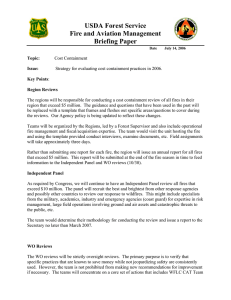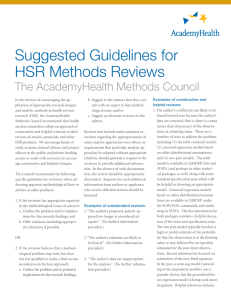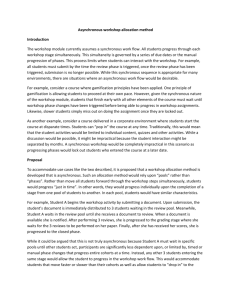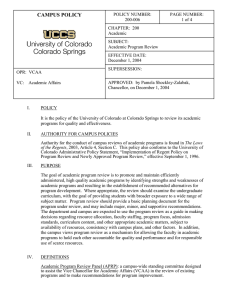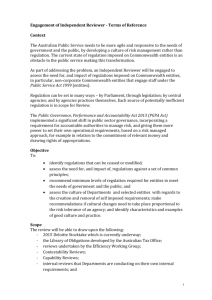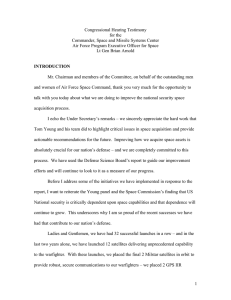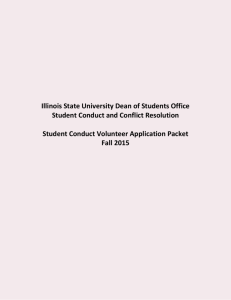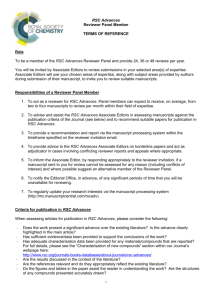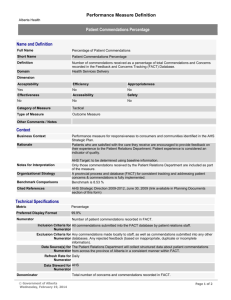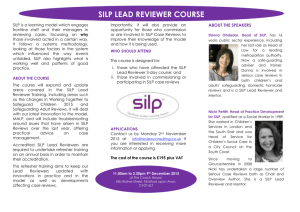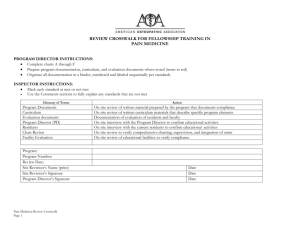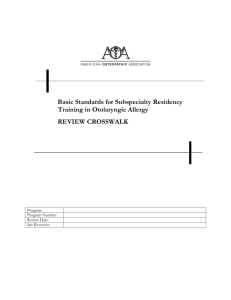Guide and template to preparing review reports
advertisement
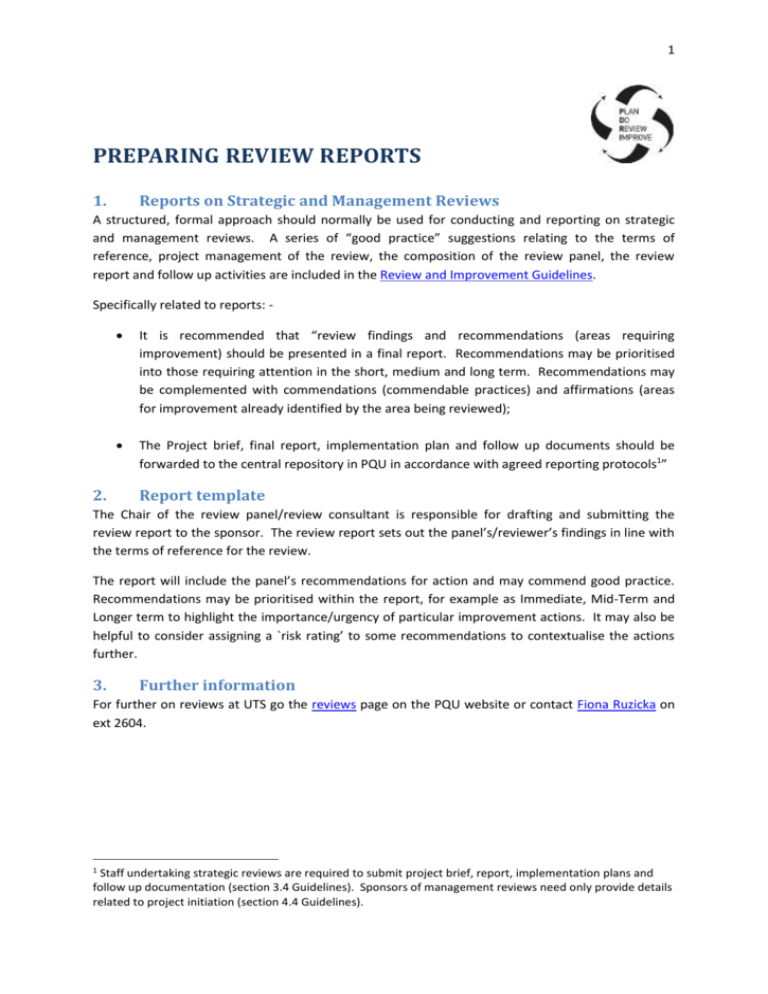
1 PREPARING REVIEW REPORTS 1. Reports on Strategic and Management Reviews A structured, formal approach should normally be used for conducting and reporting on strategic and management reviews. A series of “good practice” suggestions relating to the terms of reference, project management of the review, the composition of the review panel, the review report and follow up activities are included in the Review and Improvement Guidelines. Specifically related to reports: - 2. It is recommended that “review findings and recommendations (areas requiring improvement) should be presented in a final report. Recommendations may be prioritised into those requiring attention in the short, medium and long term. Recommendations may be complemented with commendations (commendable practices) and affirmations (areas for improvement already identified by the area being reviewed); The Project brief, final report, implementation plan and follow up documents should be forwarded to the central repository in PQU in accordance with agreed reporting protocols1” Report template The Chair of the review panel/review consultant is responsible for drafting and submitting the review report to the sponsor. The review report sets out the panel’s/reviewer’s findings in line with the terms of reference for the review. The report will include the panel’s recommendations for action and may commend good practice. Recommendations may be prioritised within the report, for example as Immediate, Mid-Term and Longer term to highlight the importance/urgency of particular improvement actions. It may also be helpful to consider assigning a `risk rating’ to some recommendations to contextualise the actions further. 3. Further information For further on reviews at UTS go the reviews page on the PQU website or contact Fiona Ruzicka on ext 2604. 1 Staff undertaking strategic reviews are required to submit project brief, report, implementation plans and follow up documentation (section 3.4 Guidelines). Sponsors of management reviews need only provide details related to project initiation (section 4.4 Guidelines). 2 The following headings are based on good practice and are common to most formal reports: SUGGESTED HEADINGS Introduction/Background This should include a brief description of the context for the review, the rationale and issues to be addressed and the expected scope of the review Executive Summary The executive summary provides the reader with an overview of the report’s essential information. It should briefly outline the purpose, the background issues, the scope of the review, the findings of the reviewer, the recommendations and main implications for the sponsor. Terms of Reference (either in the body of the Report or in an Appendix) In general, terms of reference describe the purpose of a review. It defines the scope of the reviewer’s deliberations. Methodology or review process (including review management i.e. reference group/panel) This would normally include an outline of the approach to the review including governance arrangements and relevant timelines. Discussion of findings and recommendations/commendations This is the main body of the report and includes detailed discussions of the findings and recommendations/commendations. Conclusion The conclusion summarises the main findings of the report and directly addresses the purpose of the review. Appendices The appendices usually contains supporting material that is relevant to the process and to the findings of the review such as the project brief, list of interviewees, schedule of interviews, interview questions and transcripts of interviews, data sources and analysis, graphs and figures, trend data etc
